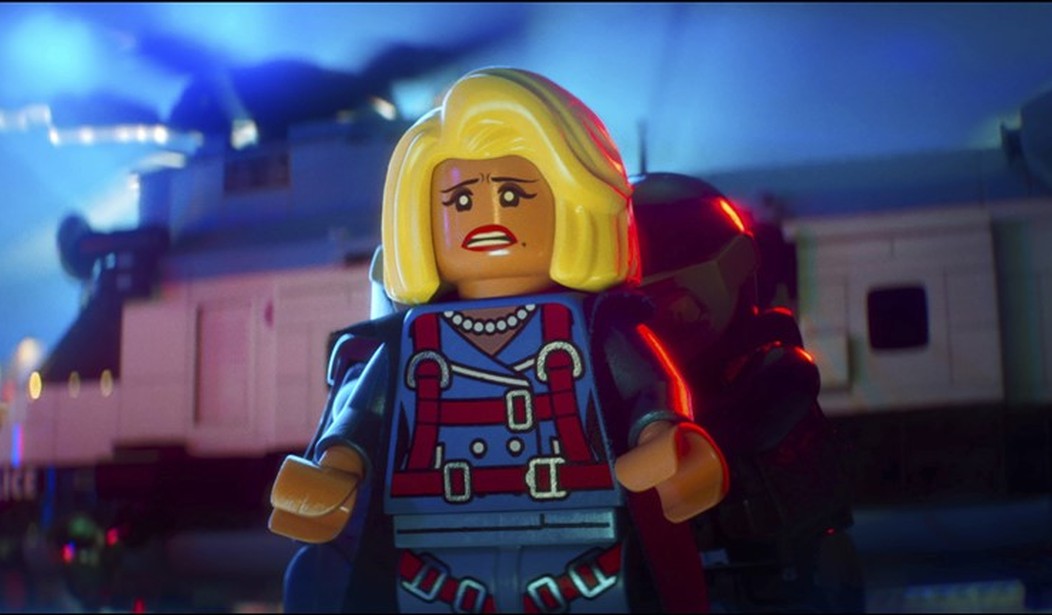Everything is awesome? Apparently not, although everything is certainly becoming woke, including snap-together blocks from Lego. The toy- and entertainment-industry giant announced today that it will no longer apply “girls” and “boys” labels to its toys in order to strike a blow against gender bias, as well as eliminate other “harmful stereotypes.”
Parents can finally heave a sigh of relief, or something:
Lego on Monday vowed to rid its toys of “gender bias and harmful stereotypes” in a push to make them more accessible to girls.
The world’s largest toymaker has already stopped labeling its products as “for girls” or “for boys” and its website does not allow searches by gender, The Guardian noted.
Recent product lines have also “been specifically designed to appeal to boys and girls,” the company’s chief product and marketing officer, Julia Goldin, told the UK paper.
“We’re testing everything on boys and girls, and including more female role models,” said Goldin.
“Our job now is to encourage boys and girls who want to play with sets that may have traditionally been seen as ‘not for them,’” Goldin added.
“We’re working hard to make Lego more inclusive,” Goldin said.
The move comes after the Geena Davis Institute on Gender in Media published a study concluding that boys don’t like to play with girls’ toys. They fear getting teased over it, which somehow translates to being the fault of the toymaker:
Seventy-one per cent of boys surveyed feared they would be made fun of if they played with what they described as “girls’ toys” – a fear shared by their parents. “Parents are more worried that their sons will be teased than their daughters for playing with toys associated with the other gender,” said Madeline Di Nonno, the chief executive of the Geena Davis Institute on Gender in Media, who conducted the research.
“But it’s also that behaviours associated with men are valued more highly in society,” said Di Nonno. “Until societies recognise that behaviours and activities typically associated with women are as valuable or important, parents and children will be tentative to embrace them.”
The study found that parents still encouraged sons to do sports or Stem activities, while daughters were offered dance and dressing up (girls were five times more likely to be encouraged in these activities than boys) or baking (three times more likely to be encouraged).
“These insights emphasise just how ingrained gender biases are across the globe,” said Geena Davis, the Oscar-winning actor and activist who set up the institute in 2004 to combat negative gender stereotyping and foster inclusion.
“There’s asymmetry,” said Prof Gina Rippon, a neurobiologist and author of The Gendered Brain. “We encourage girls to play with ‘boys’ stuff’ but not the other way around.”
This was a problem since toys offered “training opportunities”, she said. “So if girls aren’t playing with Lego or other construction toys, they aren’t developing the spatial skills that will help them in later life. If dolls are being pushed on girls but not boys, then boys are missing out on nurturing skills.”
The surprise here is that Lego took this seriously. One study from an activist group is hardly a reason for a strategic marketing sea change, especially considering the actual issue at hand. Even taking the study at face value, the problem here isn’t the toys — it’s the parents. Toys don’t offer dance lessons to girls and T-ball to boys, after all. Parental choices in toys might reinforce biases, but they don’t create them, and most children don’t read labels on toys anyway.
But perhaps this is not so surprising, and perhaps Lego is trying to score some cheap woke points for what is really a marketing decision. If 71% of boys won’t play with toys labeled for girls, then removing the label offers the possibility of increased sales — at least in theory. If Lego can put on a show of wokery on top of that, well, so much the better! They already went down that road this spring by announcing their launch of a new LGBTQ+ set of figurines, complete with a figurine representing drag queens. No, I am not kidding:
In the “spraying room” at Lego HQ, tiny figurines are layered with bright, glossy paint before being placed on a rainbow-esque arch. The result, a waterfall of colour with 11 brand new minifigures striding purposefully towards an imagined brighter future, is the Danish toymaker’s inaugural LGBTQIA+ set, titled Everyone Is Awesome.
The colours of the stripes were chosen to reflect the original rainbow flag, along with pale blue, white and pink representing the trans community, and black and brown to acknowledge the diversity of skin tones and backgrounds within the LGBTQIA+ community.
In all but one case no specific gender has been assigned to the figures, who are intended to “express individuality, while remaining ambiguous”.
The exception, a purple minifigure with a highly stylised beehive wig, “is a clear nod to all the fabulous drag queens out there”, said the designer, Matthew Ashton, who initially created the set for his own desk.
At that time, the Babylon Bee skewered the toymaker by predicting “genderless bricks”:
As part of its new push toward inclusion and diversity, LEGO has unveiled a new set of genderless bricks without male or female connectors. The entirely smooth bricks have no suggestive male nubs or female receptors and instead have entirely smooth, androgynous sides all around.
If Lego could figure out a way to make money out of those, satire would truly become real life in an instant.








Join the conversation as a VIP Member